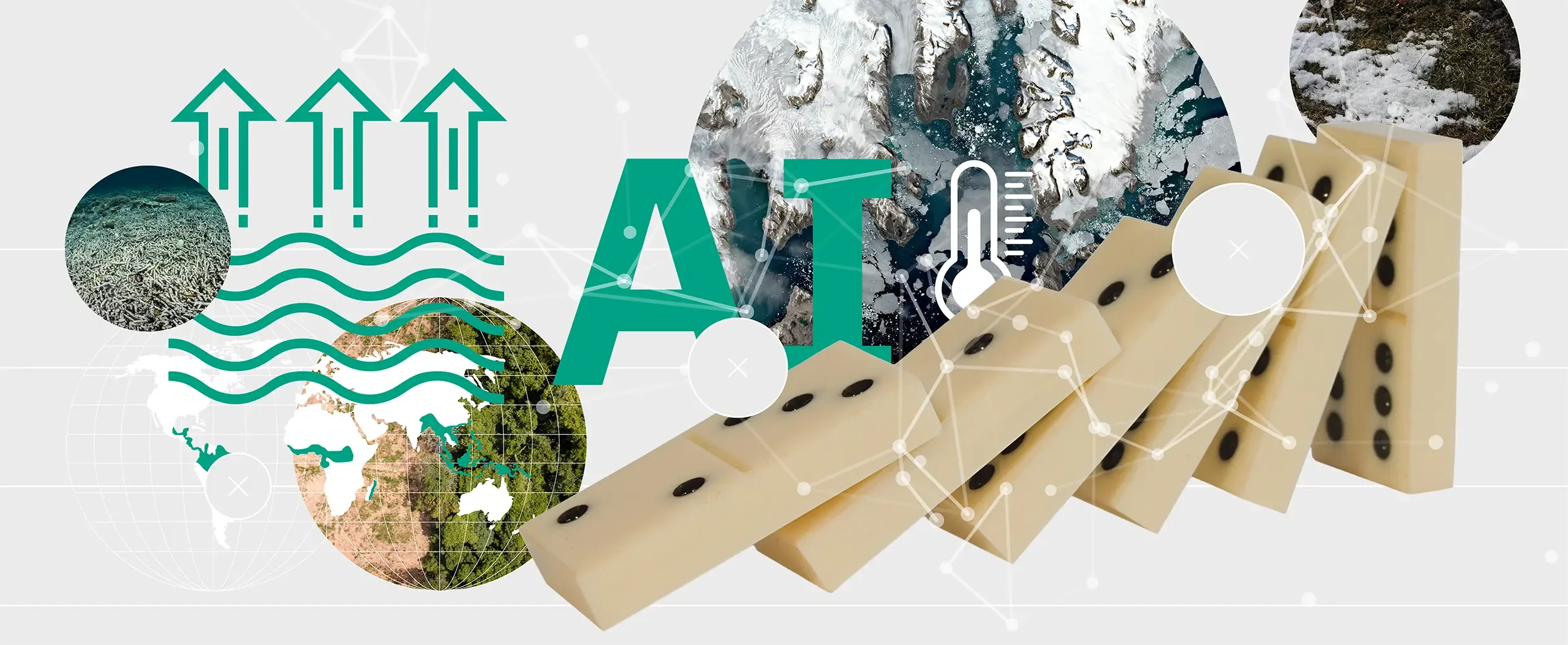Future Horizons:
10-yearhorizon
AI assists tipping-event analysis
25-yearhorizon
Model-based monitoring of tipping-event warnings
In the cryosphere, one of the most immediate risks is to the Greenland ice sheet. Recent evidence suggests that this system could be near its tipping point, with about 7 metres of sea-level rise likely to ensue over the coming centuries.6 However, as with all tipping points, limited real-world data combined with the weaknesses of current climate models leave a high degree of uncertainty over exactly how much of a “push” is required.
Models also show that the Amazon rainforest can irreversibly “flip” from forest to savannah. This would be a catastrophic shift, accelerating climate change7 and fuelling more warming.8 The permafrost regions of the far north are also thought to be a tipping element and recent studies indicate this tipping point may be closer than thought.9 Collapse of the permafrost will release large quantities of greenhouse gases, accelerating and increasing the warming trend.
The current generation of Earth-system models struggle to adequately resolve these tipping elements in many cases.10 Some models omit them entirely, making the accurate inclusion of tipping elements an important focus for reducing the ambiguity of model-based climate predictions. The best-modelled tipping elements are those, like the Greenland ice sheet, that primarily depend on inanimate physical objects: tipping elements that include biosphere components, such as the Amazon, are a significantly bigger challenge and require substantial ground-truthing with observations.
Tipping element modelling and forecasting - Anticipation Scores
The Anticipation Potential of a research field is determined by the capacity for impactful action in the present, considering possible future transformative breakthroughs in a field over a 25-year outlook. A field with a high Anticipation Potential, therefore, combines the potential range of future transformative possibilities engendered by a research area with a wide field of opportunities for action in the present. We asked researchers in the field to anticipate:
- The uncertainty related to future science breakthroughs in the field
- The transformative effect anticipated breakthroughs may have on research and society
- The scope for action in the present in relation to anticipated breakthroughs.
This chart represents a summary of their responses to each of these elements, which when combined, provide the Anticipation Potential for the topic. See methodology for more information.



